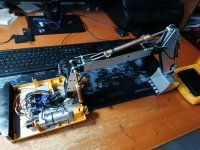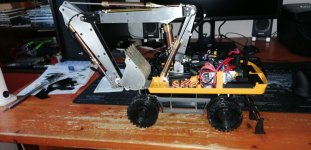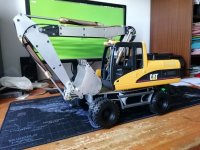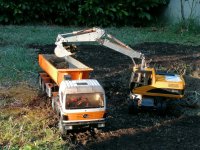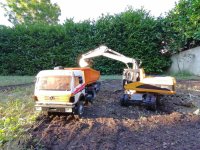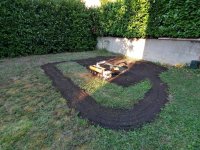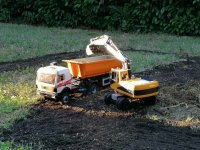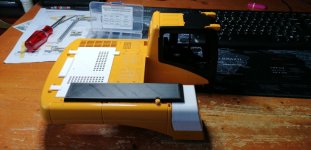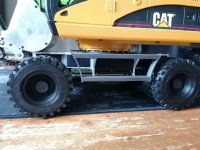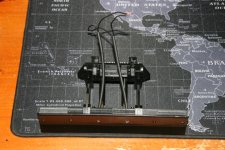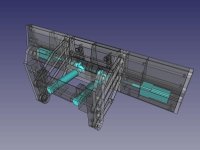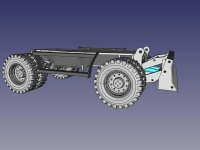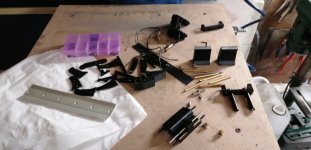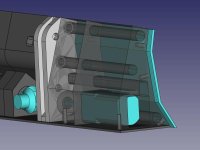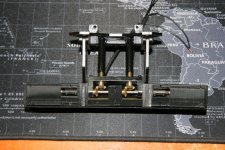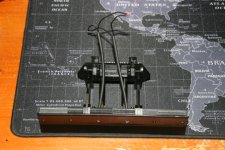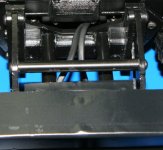Painting (or let the nightmare begin)
Painting is something I am not able to do. No excuses, I am a total ZERO

But a model has to be painted, so this phase eventually arrives. And, as usual, it is a real nightmare, for me. Because everything can be ruined by I wrong made painting. No matter how much work it took to get to this point, nice painting is... let's say 50% of the whole?
Anyway, stop philosophizing about painting and let's get into the real operation.
But before starting with spray can, I had to find the color I saw in the real model (it can be seen in the
first post). That wonderful blue that (of course) is not from CAT. It was much more harder than I expected, because no color shop wanted to make me a color based on a picture. None

So I started looking around the net looking for a matching blue. RAL5005 (signal blue) was the closest match, but it was not it. With no other options I started making research on the specific machine of the picture. unfortunately it probably had been sold in the meantime so I could not find any hint on the website that published it, because it was already disappeared...
I had luck with a name on the side of the body, HUTHMANN: it turned out it was a NEW HOLLAND reseller. And it turned out that New Holland Blue was a perfect match for the color I was looking for. New Holland has a reseller few kilometers away from my house, so buying it was extremely easy
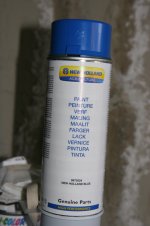
With the main paint found, I choose "semi gloss black" for chassis and bucket and "Tamiya semi gloss clear" for fixing decals ink.
And painting could start. First came the yellow Bruder body. I soon discovered that solvent in the paint slightly dissolved the yellow in the plastic and part of it got into the blue making it slightly greenish.. I had to do the work twice on the plastic part (and it got slightly damaged from this work). At the end I found a way to paint it. But it took many days to have an acceptable final look.
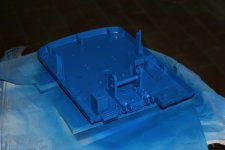
To hide the holes of the screw I applied a vinyl adhesive sheet on the side of the arms. It was an A4 sheet of vinyl made for inkjet printers (the same I used to make decals) so it was very easy to paint over it. Final results were good and screws were well hidden under this layer.
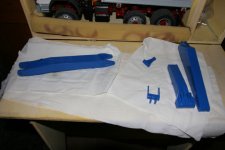
The same I did for the chassis.
On ALU parts I applied a primer for light metals, but It did not do it work very well. Final result on ALU parts was a very fragile paint that is easily damageable.
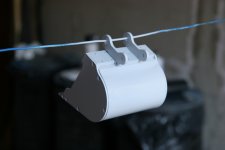
Decals were made from scans from original Bruder decals and some other picture downloaded from the net. I made a A4 picture ready to be printed on adhesive vynil. To fix the colors I used "Tamiya semi gloss clear" that gave a nice semi gloss finish very similar to the other paint of the model.
Here is a small size copy of the decals file. The full sized one can be found on my
GitHub.
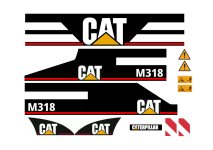
Decals give a very nice touch to the model, I like very much the final results:
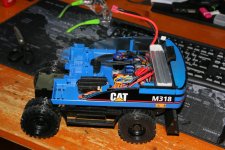
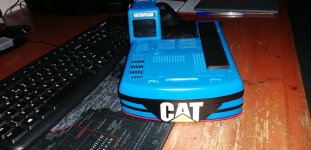
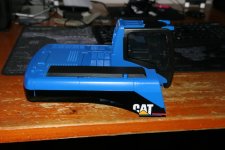
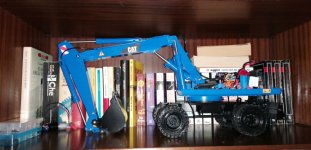
During painting I also applied windows glasses at the cab and a steering wheel replaced the two levers for tracks:
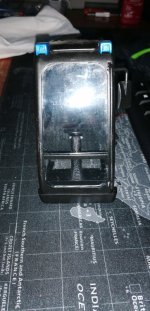
Cylinders were painted too and I applied paint also on the part of the tubing that goes from the tip of the cylinder. Just to simulate the real metallic tubing. With the CNC router I made a very little
tubing passthrough that I applied at the opposite end of the cylinder (it keeps the tubing in place and parallel to the cylinder)
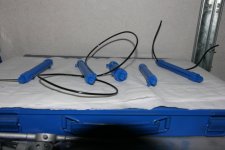 With painting FINALLY done (with acceptable results) my model is FINISHED.
With painting FINALLY done (with acceptable results) my model is FINISHED.
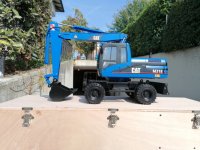
Luca72
P.S: In the next days I will add some posts that integrates some steps of the building I overlooked and I will add a kind of Bill Of Materials just in case somebody were interested in building some parts or even the full model.
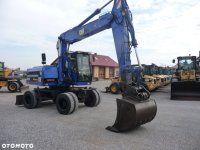


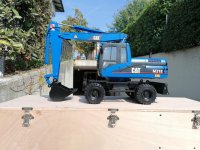




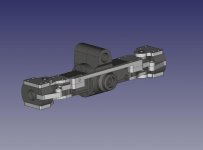
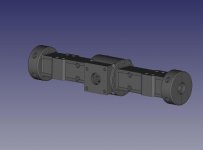
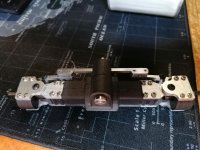
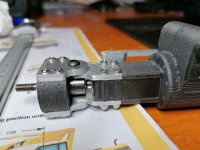
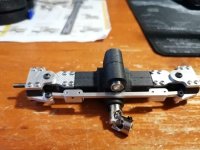
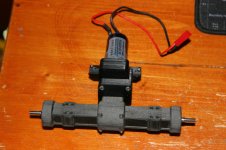
 stall current) and Tamiya gearbox gears:
stall current) and Tamiya gearbox gears: 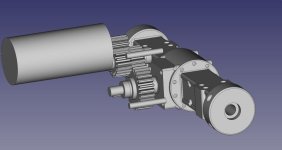
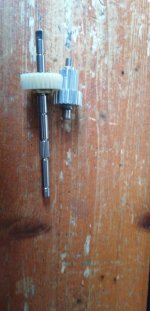
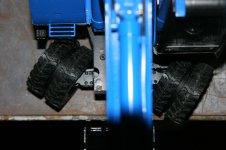
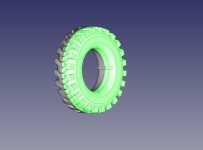
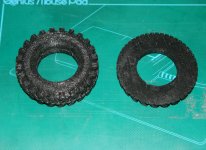
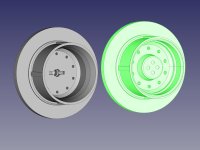
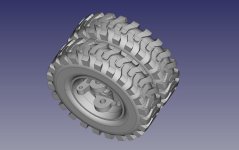
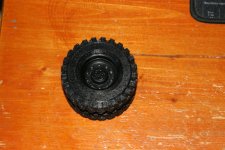
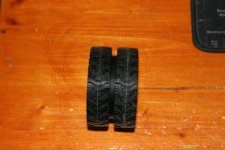
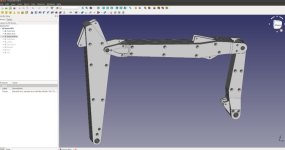
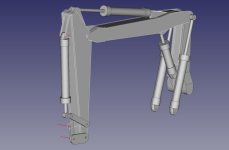
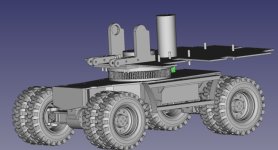
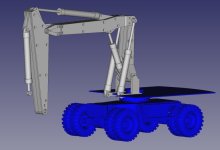
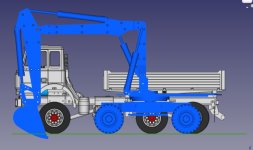
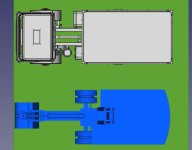
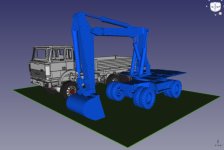
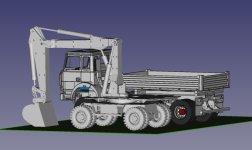
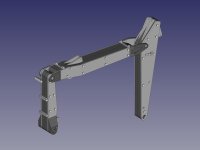
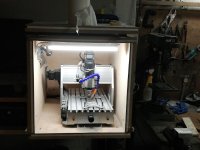
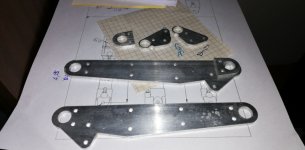
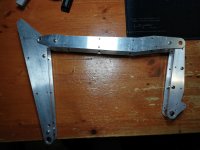
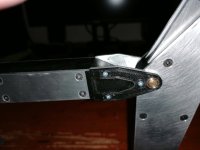
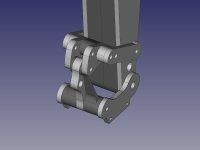
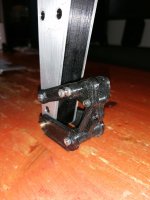
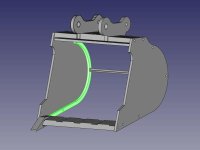
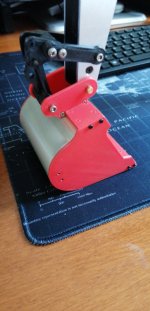
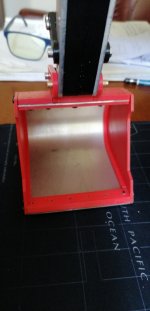
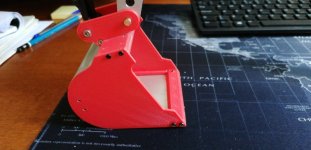
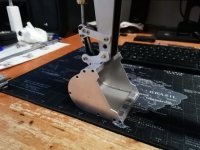
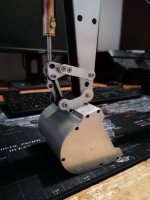
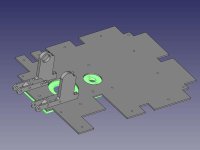
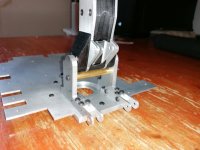
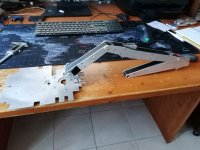
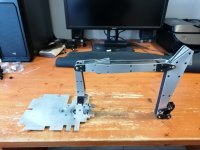
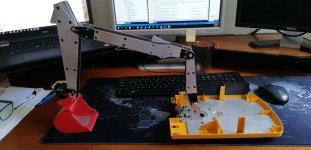
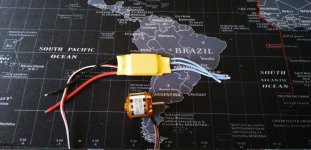
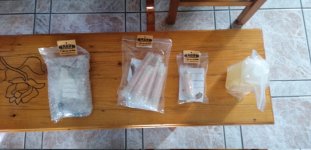
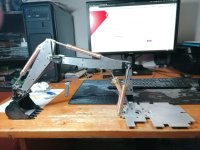
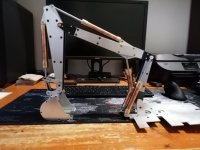
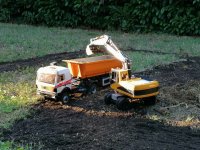
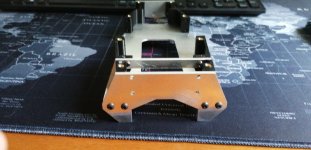
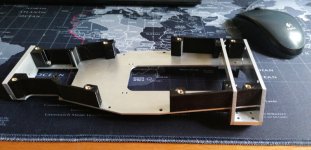
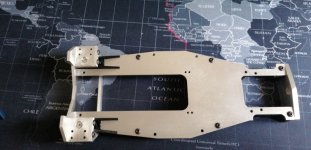
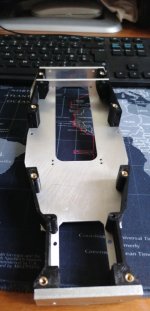
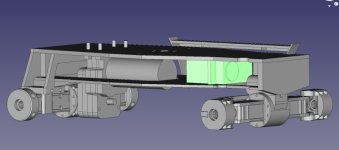
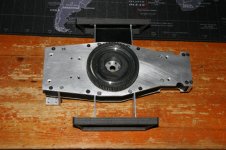
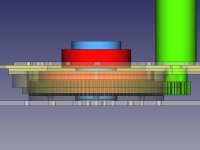
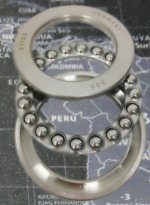
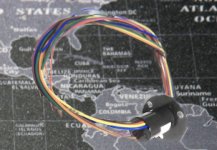
 ) Finally I found a 37 RPM HIGH current (but not highest, more like 10000 RPM) motor that fit nicely. Gear ratio is made up by 100T (big rear fix on undercarriage) and 20T (motor gear) so final ratio is 5:1.
) Finally I found a 37 RPM HIGH current (but not highest, more like 10000 RPM) motor that fit nicely. Gear ratio is made up by 100T (big rear fix on undercarriage) and 20T (motor gear) so final ratio is 5:1.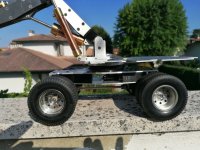
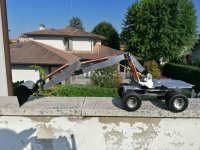
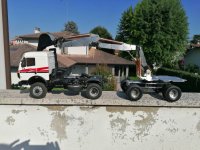
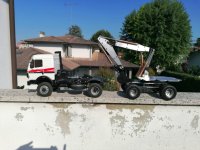
 , finally. This was my first time with hydraulics but, honestly, it was not so hard. Connecting everything took me little more than one hour.
, finally. This was my first time with hydraulics but, honestly, it was not so hard. Connecting everything took me little more than one hour.